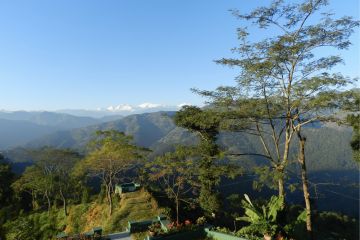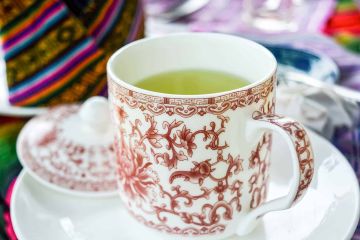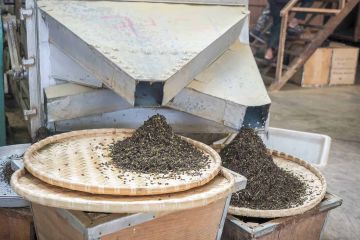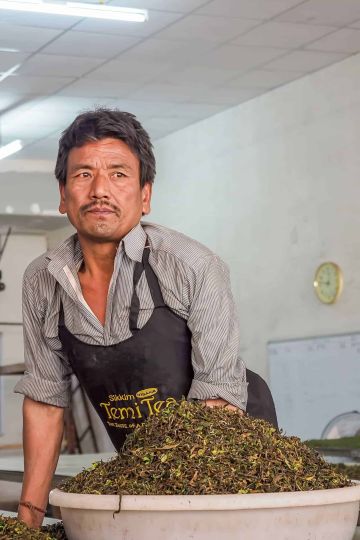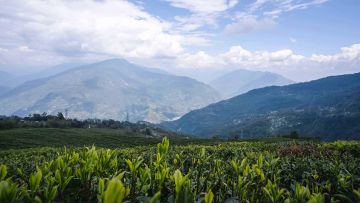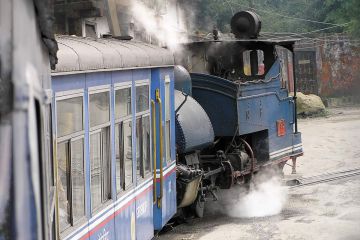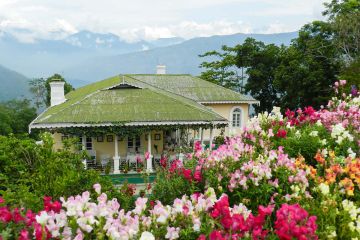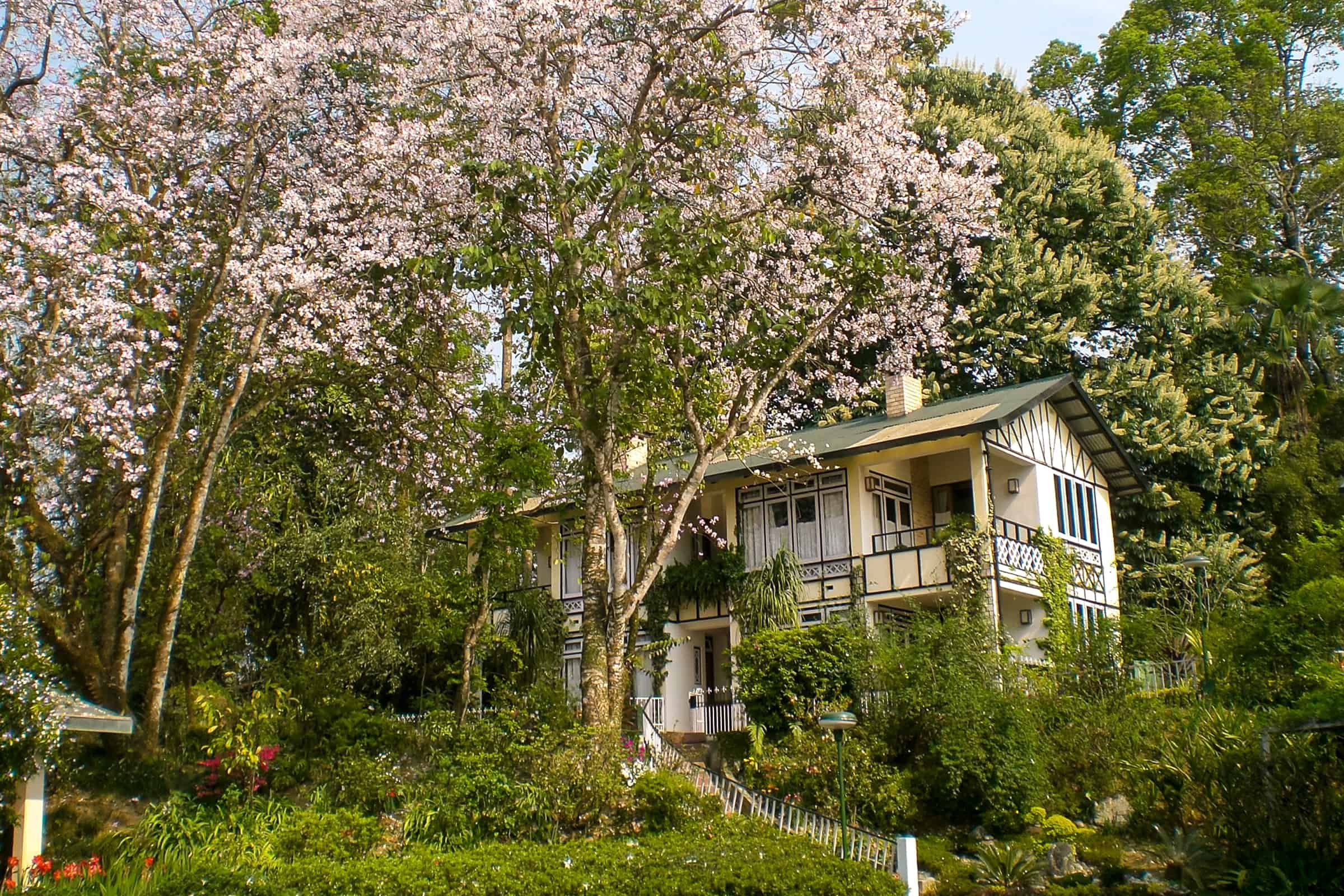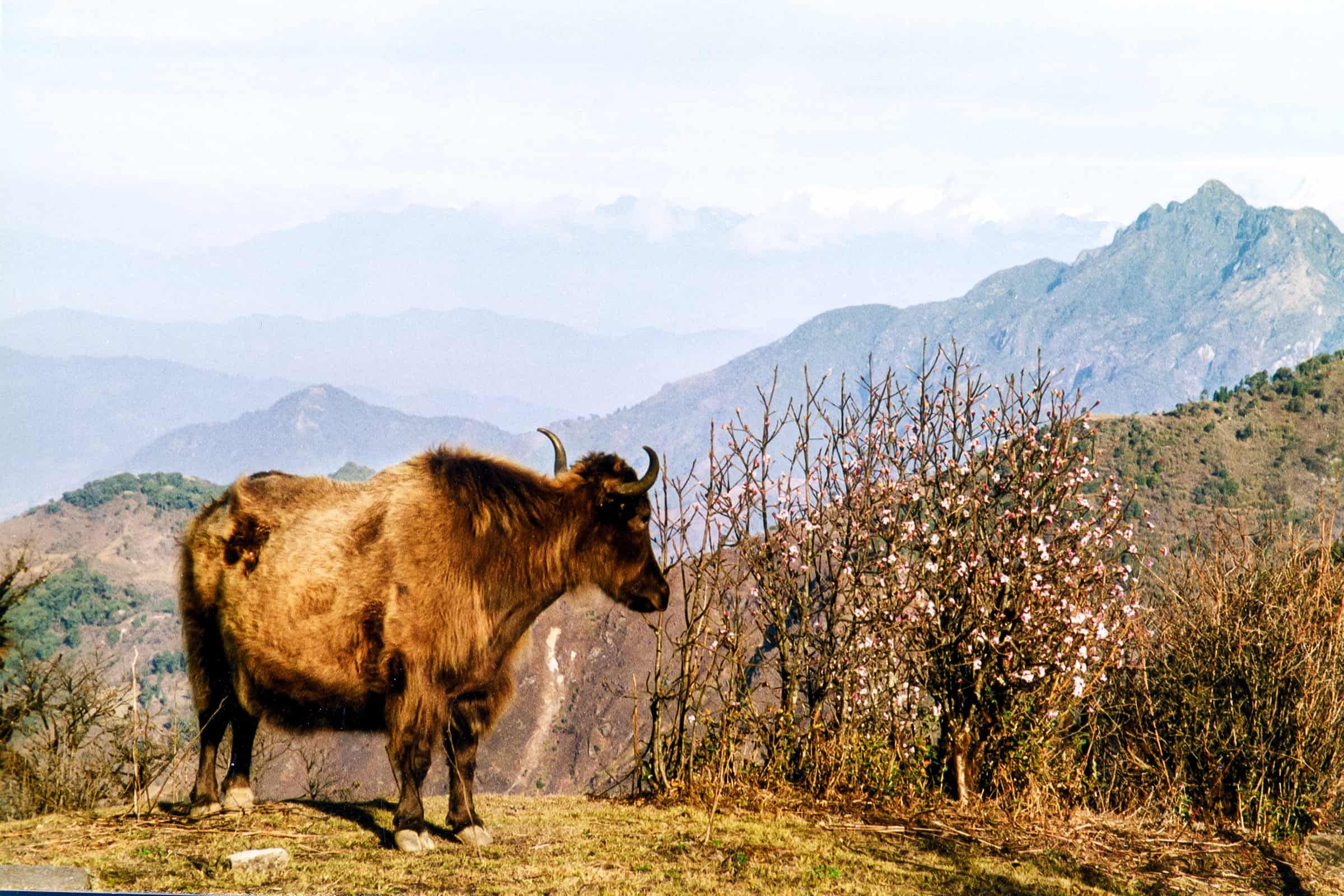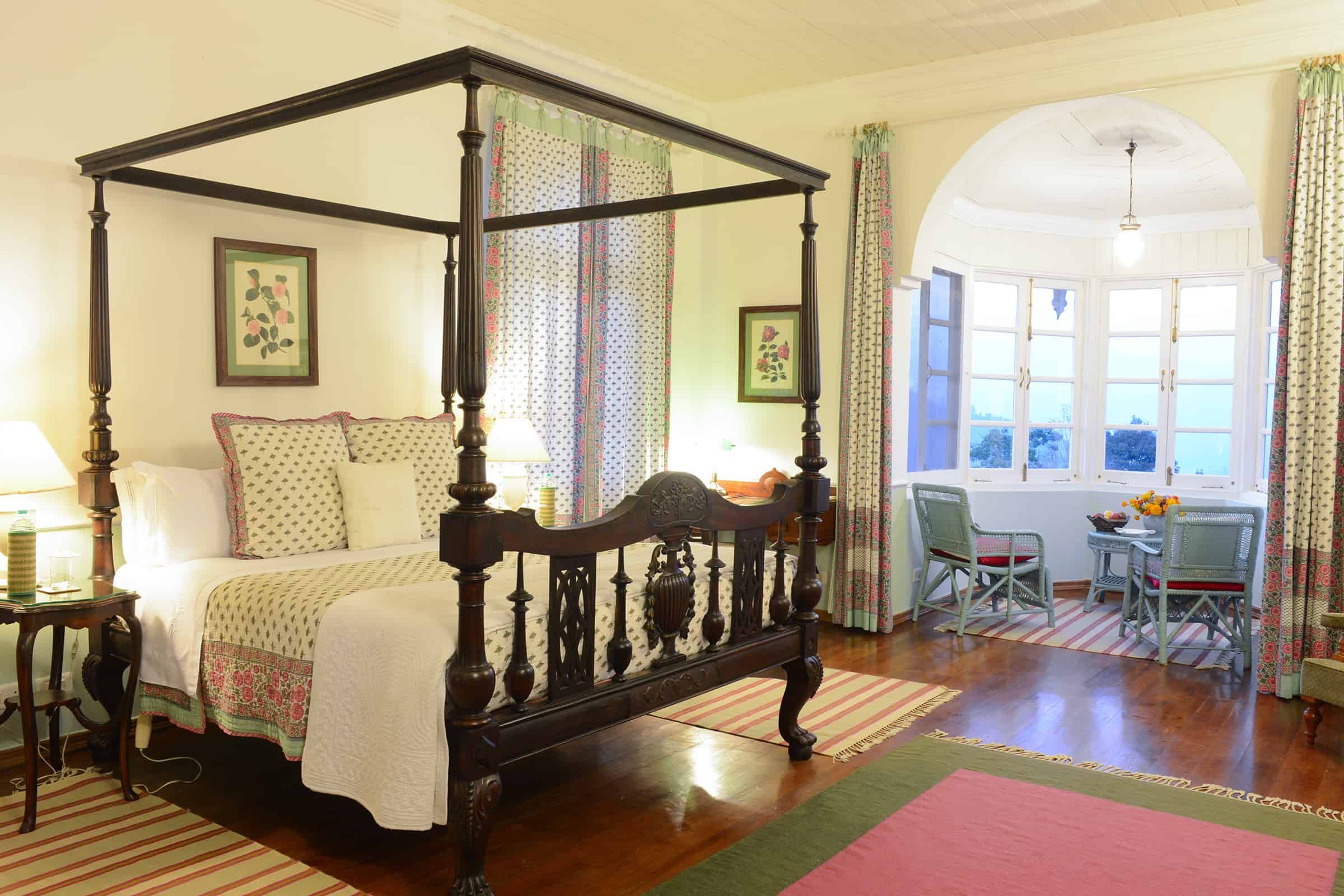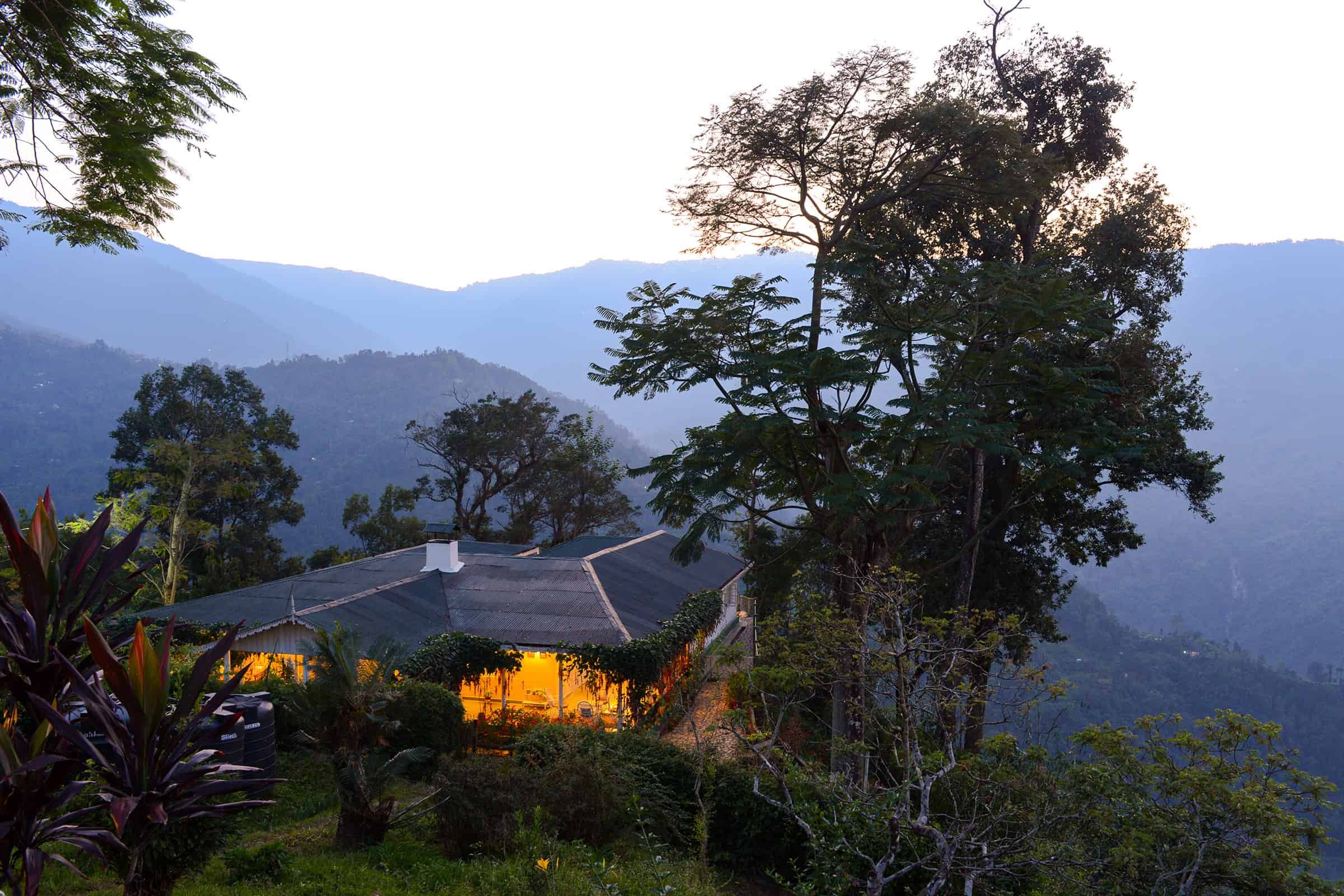Tea, Tibetan temples, steam locomotives, white mountains, colonial heritage
Darjeeling & Kalimpong
General information
Tea gardens & colonial heritage
In addition to the tea city of Darjeeling, the mountainous district of the Indian state of West Bengal also bears the same name. It borders Sikkim to the north and extends to the city of Siliguri in the south, and its population and culture originate mainly from nearby Nepal. The more important towns in the Darjeeling district include Darjeeling itself, Kalimpong and Kurseong.
The name Darjeeling is immediately associated with the ‘champagne’ of teas. Originally part of the Kingdom of Sikkim, the town at an altitude of around 2,000m was once the summer residence of the British colonial rulers, who moved their administrative headquarters from Kolkata (Calcutta) to the cool, breezy hills of northern Bengal during the hot and humid summer months and also started growing tea there.
The narrow-gauge railroad, built in 1880, also dates back to this time and is still toiling up the lush green hills through forests and tea gardens with the same ancient steam locomotives and carriages. The affectionately named ‘Toy Train’ has remained virtually unchanged since the days of the British Empire, making it a nostalgic highlight for train enthusiasts from all over the world.
From the mountain ranges around Darjeeling, you not only have a wonderful view of the extensive tea plantations, but also of the seven and eight thousand meter peaks of the Himalayas. From nearby Tiger Hill in particular, you can enjoy a fantastic panoramic view of the Kanchenjunga massif in the north of Sikkim all the way to Mt. Everest, Lhotse and Makalu further west in Nepal.
In the lovely Kalimpong, 1,250 m above sea level, orchids, cacti and other ornamental plants are grown in many small nurseries for export to the cities of northern India.
Like Darjeeling, the town, which today belongs to West Bengal in India, was part of the Himalayan kingdom of Bhutan until the beginning of the 19th century. The Bhutanese monastery Thongsa Gompa, which is unfortunately no longer in its original state, is a reminder of this time. Large parts of the Buddhist monastery were destroyed during the Gorkha Uprising.
A little further east of Kalimpong is an area called Dooars, which was once the gateway to Bhutan. In addition to many tea gardens planted in the lowlands, there are several nature reserves where you can marvel at the original flora and fauna of the Himalayan foothills, including a paradise for bird lovers as well as the now rare leopards, rhinos and elephants. Dooars is also known for the rich culture, craftsmanship and colorful markets of its indigenous tribal people.
Our trips in Darjeeling and Kalimpong
Best time to travel
Spring is the best time to see Darjeeling’s tea harvest, the magnificent flowers of the Himalayas and the orchids in bloom. The colorful blossoms of the rhododendron and magnolia trees, with their heavy, lush, sweet scents, are a very special experience in the Himalayas and can best be experienced by trekking.
From April onwards, the fields on the slopes and in the valleys turn green again after the winter dry season. From July to September, the area receives a lot of rainfall during the summer monsoon. The clear air after the monsoon then ensures excellent views of the white mountain peaks from October to December.
